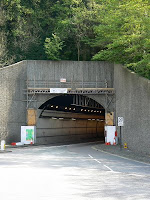Fortunately there's a Brighton & Hove Council car park opposite my destination. That's £2.20 for two hours, which is pretty competitive for somewhere as busy as Brighton. I could have parked further away for less but time is of the essence today.
My journey took 33 minutes to cover 12.3 miles. Now, let’s assume my car does 28 miles to the gallon. Okay, it’s not an assumption. I’ve been keeping track of my average fuel consumption for the last couple of years. That’s just under a gallon of petrol for the round trip. Petrol’s 94.9p a litre at the moment, or £4.31 a gallon if you prefer, so – putting my trusty solar-powered calculator to work – that’s £3.79 on petrol, plus £2.20 on parking, which is a penny short of £6.
If I head over to vcacarfueldata.org.uk, I learn that my car emits 248g of carbon per kilometre. That’s pretty high compared with smaller, newer cars. So, swapping between imperial and metric again, my 24.6 mile round-trip left 9.8kg of CO2 floating around. I don’t know exactly what that means but another quick internet search suggests it’ll take a single tree a whole year to absorb that, so it doesn’t sound too good at this stage.
£5.99 for the round trip, 9.8kg of CO2 footprint and 33 minutes each way. It’s time to take a look at a bus trip.
 Journey time on a bus is going to be longer. To start with there’s the five minute walk to the bus stop, plus the extra five minutes to make sure I don’t miss the bus if it’s a bit early. Then there’s what should be around 42 minutes on the bus and another three or four minutes walk at the other end. Let’s say 55 minutes in total if I’m lucky.
Journey time on a bus is going to be longer. To start with there’s the five minute walk to the bus stop, plus the extra five minutes to make sure I don’t miss the bus if it’s a bit early. Then there’s what should be around 42 minutes on the bus and another three or four minutes walk at the other end. Let’s say 55 minutes in total if I’m lucky.My return ticket costs £3.50. Nothing more to pay. The driving’s slightly
 shorter than the car trip because the bus stops on the main road. So we’re looking at 11.1 miles each way; a 22.2 mile round trip. I can’t calculate a precise personal carbon cost because it’ll vary depending on the number of people on the bus. Apparently a bus produces five times more CO2 than my car – but it also carries more people than my car. Looking at carbonindependent.org, they say figures from the Department for Environment, Food and Rural Affairs suggest an average 89g per km per person, so I’ll use that – which gives me a figure of 3.2kg of CO2. I could also factor in my personal CO2 emissions from breathing more heavily when walking uphill, wear and tear on my shoes, wear and tear on my car – but I’m just after a rough figure to compare a trip to Brighton and back.
shorter than the car trip because the bus stops on the main road. So we’re looking at 11.1 miles each way; a 22.2 mile round trip. I can’t calculate a precise personal carbon cost because it’ll vary depending on the number of people on the bus. Apparently a bus produces five times more CO2 than my car – but it also carries more people than my car. Looking at carbonindependent.org, they say figures from the Department for Environment, Food and Rural Affairs suggest an average 89g per km per person, so I’ll use that – which gives me a figure of 3.2kg of CO2. I could also factor in my personal CO2 emissions from breathing more heavily when walking uphill, wear and tear on my shoes, wear and tear on my car – but I’m just after a rough figure to compare a trip to Brighton and back.So – driving from Lewes to Brighton takes 40% less time than catching the bus but the bus costs 40% less and only produces a third of the Carbon Dioxide. What does that mean? Nothing that I didn’t know or couldn’t guess. If there’s time for me to choose between taking the bus and driving myself, I’ll take the bus. And I’ll be looking more closely at carbon emissions when it’s time to change my car.


